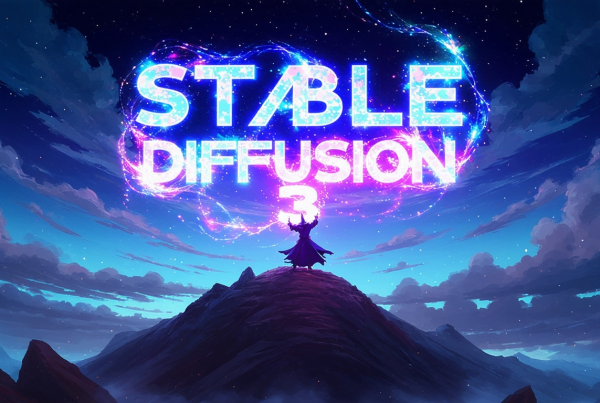A Developer’s Perspective on Amazon Bedrock, Google Vertex AI, and Microsoft Azure Cognitive Services
As a developer deeply immersed in the world of artificial intelligence, I’ve spent the past few months experimenting with the capabilities of the “Big Three” generative AI platforms: Amazon Bedrock, Google Vertex AI, and Microsoft Azure Cognitive Services. This hands-on experience has given me unique insights into the strengths, weaknesses, and ideal use cases for each platform. In this post, I’ll share my findings to help you navigate the exciting, yet sometimes overwhelming, landscape of generative AI.
The Generative AI Revolution
Before diving into the platforms, let’s take a moment to appreciate the paradigm shift that generative AI represents. These are AI models capable of creating entirely new content – from text and images to code and even music. The potential applications are vast, ranging from streamlining content creation for marketing teams to accelerating complex scientific research.
The Contenders
- Amazon Bedrock: A fully managed service offering pre-built foundation models (FMs) accessible through a single API. Bedrock puts a strong emphasis on security, privacy, and responsible AI practices.
- Google Vertex AI: A unified platform that provides access to Google’s cutting-edge AI research, including powerful models like PaLM 2 for text generation. Vertex AI offers both pre-trained models and the flexibility to build custom solutions.
- Microsoft Azure Cognitive Services: This suite provides access to large-scale generative models, including well-known GPT-3 variants. Azure excels in seamless integration with other Microsoft services.
Feature-by-Feature Breakdown
After extensive testing, here’s how these platforms stack up across key aspects:
- Pre-built Models:
- Bedrock offers a diverse range of FMs for various tasks.
- Vertex AI provides access to state-of-the-art models like PaLM 2.
- Azure Cognitive Services focuses on large language models, particularly GPT-3 variants.
- Customization:
- Bedrock has limited customization options, focusing on out-of-the-box solutions.
- Vertex AI shines with high flexibility and the ability to build custom models.
- Azure offers moderate customization within its ecosystem.
- Ease of Use:
- Bedrock is the most user-friendly, ideal for rapid development.
- Vertex AI requires more technical expertise but offers greater control.
- Azure streamlines development within the Microsoft ecosystem.
- Security & Privacy:
- Bedrock puts a strong emphasis on security and responsible AI.
- Vertex AI leverages Google Cloud’s robust security features.
- Azure benefits from Microsoft’s comprehensive security infrastructure.
- Integration:
- Each platform integrates seamlessly within its respective cloud ecosystem.
Choosing Your Champion
Based on my experiments, here’s my take on the ideal use cases for each platform:
- Amazon Bedrock: Perfect for businesses prioritizing rapid development and user-friendliness. Its diverse FMs cater to various tasks without extensive customization. Ideal if security and responsible AI practices are top concerns.
- Google Vertex AI: The go-to platform for developers and researchers seeking maximum flexibility. It’s perfect for leveraging cutting-edge models like PaLM 2 or building highly customized solutions for complex projects.
- Microsoft Azure Cognitive Services: Shines for enterprises already invested in the Microsoft ecosystem. It’s particularly strong for projects heavily reliant on large language models like GPT-3 variants.
Looking Ahead
The race for innovation in generative AI is relentless. We can expect even more advanced models, capable of generating high-fidelity images or composing intricate musical pieces. Moreover, I anticipate the emergence of more user-friendly platforms that will make generative AI accessible to a wider range of users.
Conclusion
Choosing the right generative AI platform is crucial for businesses looking to harness this powerful technology. By understanding the strengths and weaknesses of each contender, you can make an informed decision that aligns with your specific needs and priorities.
Remember, the field is evolving rapidly. Whichever platform you choose, stay curious, keep experimenting, and be prepared to adapt as new capabilities emerge. The future of generative AI is bright, and we’re just scratching the surface of its potential.
| Feature | Amazon Bedrock | Google Vertex AI | Microsoft Azure Cognitive Services |
|---|---|---|---|
| Pre-built Models | Diverse foundation models (FMs) for various tasks | Access to cutting-edge models like PaLM 2 | Large language models, including GPT-3 variants |
| Customization | Limited customization, focus on pre-built solutions | High flexibility, ability to build custom models | Moderate customization options |
| Ease of Use | User-friendly, rapid development | Requires more technical expertise | Integration-focused, streamlined within Microsoft ecosystem |
| Security & Privacy | Strong emphasis on security and responsible AI | Standard Google Cloud security features | Azure’s robust security infrastructure |
| Integration | AWS ecosystem | Google Cloud Platform | Microsoft Azure and related services |
| Ideal Use Case | Rapid development, security-focused projects | Complex, highly customized AI applications | Enterprises heavily invested in Microsoft technologies |
| Strengths | User-friendliness, diverse pre-built models | Cutting-edge research, high customization | Seamless integration with Microsoft services |
| Weaknesses | Limited customization options | Steeper learning curve | Potentially less flexible outside Microsoft ecosystem |
Key Takeaways:
- Amazon Bedrock excels in rapid development and user-friendliness, with a strong focus on security and responsible AI.
- Google Vertex AI offers the most flexibility and access to cutting-edge models, ideal for complex and highly customized projects.
- Microsoft Azure Cognitive Services shines in its integration with the Microsoft ecosystem and is particularly strong in large language models.



